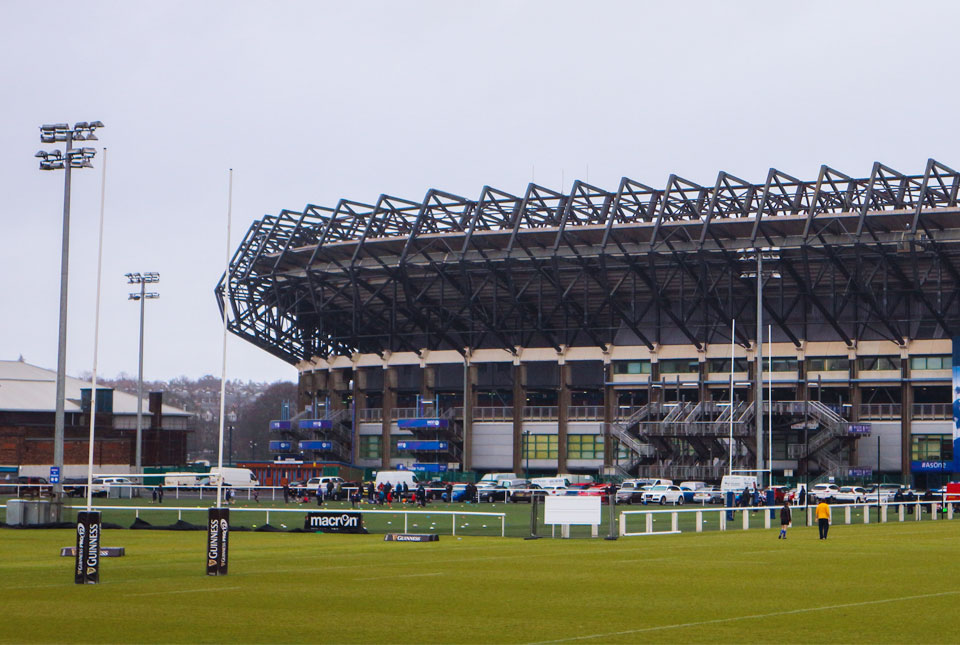Quake it off: Taylor Swift concerts shake Edinburgh
Seismometers around Edinburgh were triggered by the rapturous Murrayfield crowds over the weekend.
13/06/2024 By BGS Press
Taylor Swift’s record-breaking concerts in Edinburgh have now been scientifically recognised as ‘ground shaking’, with earthquake readings being detected up to 6 km from the venue.
BGS monitoring stations around Edinburgh recorded seismic activity generated by the concerts. Each of the three evenings followed a similar seismographic pattern, with ‘…Ready For It?’ ‘Cruel Summer’ and ‘champagne problems’ resulting in the most significant seismic activity each night.

(Top) Seismograph showing ground velocity recorded 4km from the stadium and (bottom) spectrograph showing the power at each frequency (in BPM) during the concert on 7 June 2024. BGS © UKRI.
Analysis of the seismograph data suggests that the most enthusiastic dancing occurred on the Friday night, although crowds on each night generated their own significant readings.
Whilst the events were detected by sensitive scientific instruments designed to identify even the most minute seismic activity many kilometres away, the vibrations generated by the concert were unlikely to have been felt by anyone other that those in the immediate vicinity.
Seismographic data summary
- The seismic activity from the concert was detected at two monitoring stations, the furthest of which was 6 km away at the BGS office in the Lyell Centre
- The activity was mainly generated by fans dancing in time to the music and reached its peak at 160 beats per minute (bpm) during ‘…Ready For It?’, where the crowd was transmitting approximately 80 kW of power (equivalent to around 10 to16 car batteries)
- Based on the maximum amplitude of motion (the distance the ground moves), the Friday night event was the most energetic by a small margin, recording 23.4 nanometres (nm) of movement, versus 22.8 nm and 23.3 nm on the Saturday and Sunday respectively
BGS is the national body responsible for recording earthquakes to inform the Government, public, industry and regulators, and allow for a greater understanding of earthquake risk and plan for future events.
It’s amazing that we’ve been able to measure the reaction of thousands of concert goers remotely through our data. The opportunity to explore a seismic activity created by a different kind of phenomenon has been a thrill.
Clearly Scotland’s reputation for providing some of the most enthusiastic audiences remains well intact!
Callum Harrison, BGS Seismologist.
BGS is the UK’s national earthquake monitoring agency and operates a network of monitoring stations around the country. Every year, as many as 300 naturally occurring earthquakes are detected in the UK, but only around 30 are of a high enough magnitude to be felt by people. Induced seismic events, those caused by human activity such as sonic booms, are also recorded.
Further information, including a live feed of recent UK earthquakes, is available on the BGS website.
*This article was updated on 13/6/24 to correct the energy comparison to car batteries.
Related news

Artificial intelligence is proving a game changer in tracking the Santorini earthquake swarm
07/02/2025
Scientists are harnessing the power of machine learning to help residents and tourists by detecting thousands of seismic events.

Twenty years on: the Indian Ocean earthquake and tsunami
26/12/2024
Boxing Day 2024 marks 20 years since the Indian Ocean earthquake and tsunami. Prof David Tappin reflects on the disaster and discusses what we have learnt since 2004.

New hazard maps set to help safeguard UK offshore energy industry
12/09/2024
Essential geological model detailing seismic hazard published as the pursuit of new renewable energy infrastructure intensifies.

Nearly three million people in Indonesia’s second city could be affected by an earthquake
17/07/2024
BGS-led research reveals the number of people in the Bandung metropolitan region who could be exposed to a major earthquake.

Quake it off: Taylor Swift concerts shake Edinburgh
13/06/2024
Seismometers around Edinburgh were triggered by the rapturous Murrayfield crowds over the weekend.

BGS seismologist named editor-in-chief of Geophysical Journal International
29/02/2024
Margarita Segou has been appointed as the editor-in-chief of one of the world’s leading, peer-reviewed research journals in solid-Earth geophysics.

The Kahraman Maraş earthquake sequence, Turkey/Syria, 2023
14/02/2023
Two large earthquakes occurred within hours of each other on 6 February 2023.

BGS scientists on board research vessel in Japan in major marine research collaboration
25/11/2022
Experts from BGS’s marine team are part of a major international marine research collaboration to understand more about earthquakes associated with the Japan Trench.

Scientific report published
22/09/2022
BGS was requested by the UK Government to address six questions related to recent scientific research on the hazard and risk from induced seismicity during hydraulic fracturing of shale rocks.

The future of earthquake forecasting
10/08/2021
Machine-learning illuminates earthquake activity with unprecedented detail, leading to improved earthquake forecasts.

Scientists test a new model to understand and forecast seismicity induced by hydraulic fracturing operations
02/07/2021
Encouraging new research could bring scientists a step closer to being able to forecast earthquakes induced by human activity.

10 years on: the 2011 Great East Japan Earthquake and Tsunami
11/03/2021
In remembrance, Prof David Tappin discusses the importance of tsunami anniversaries




